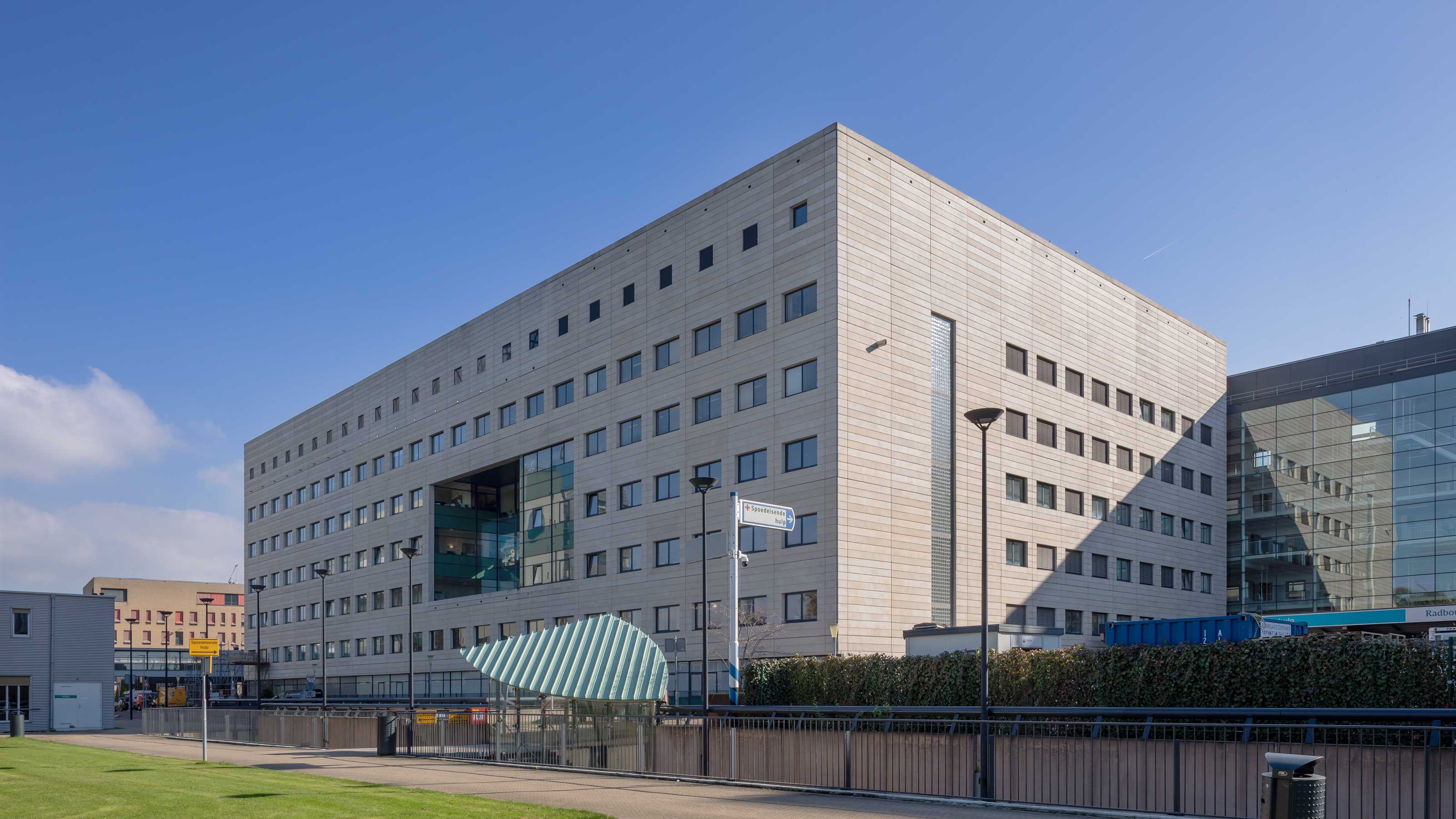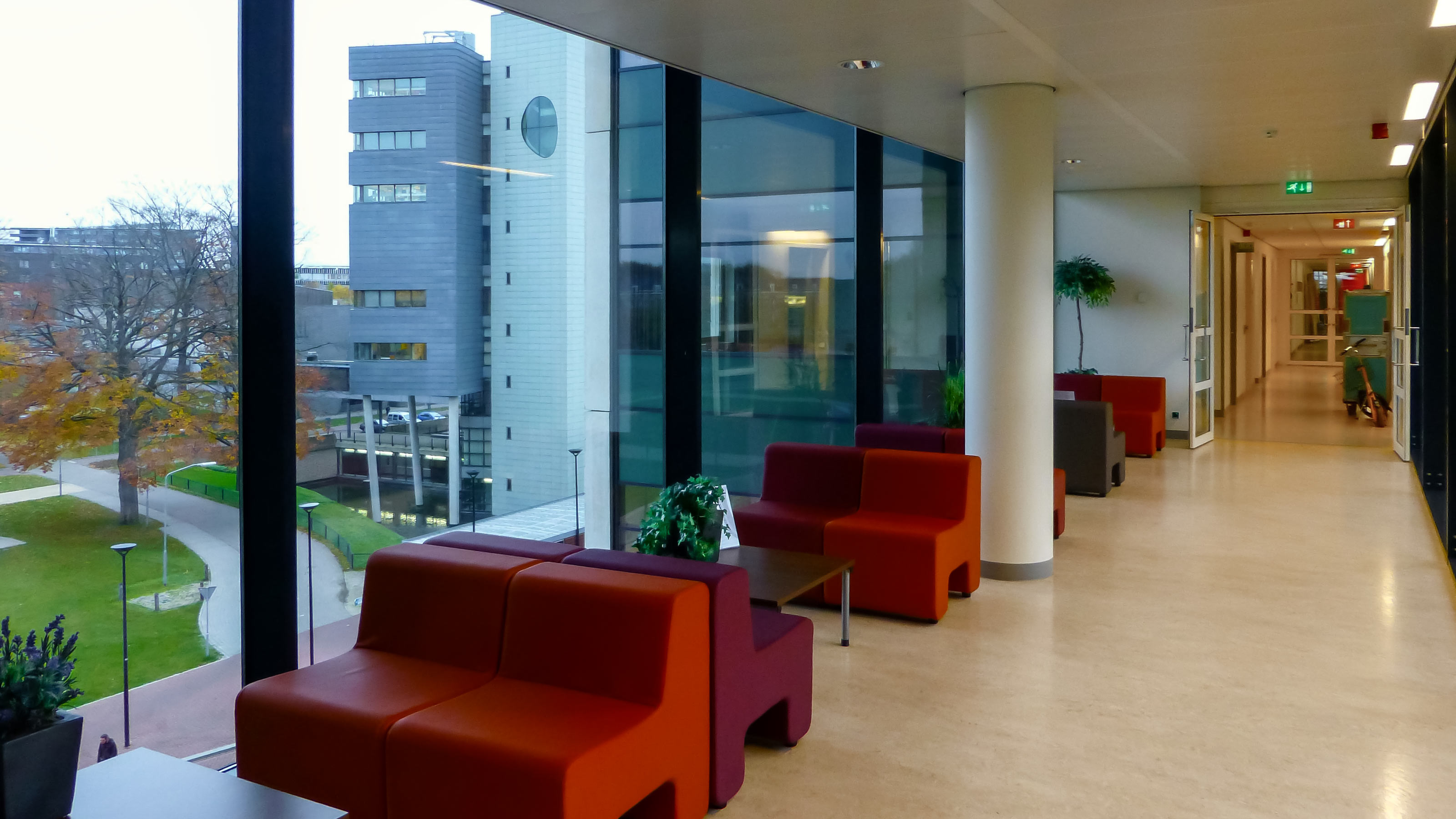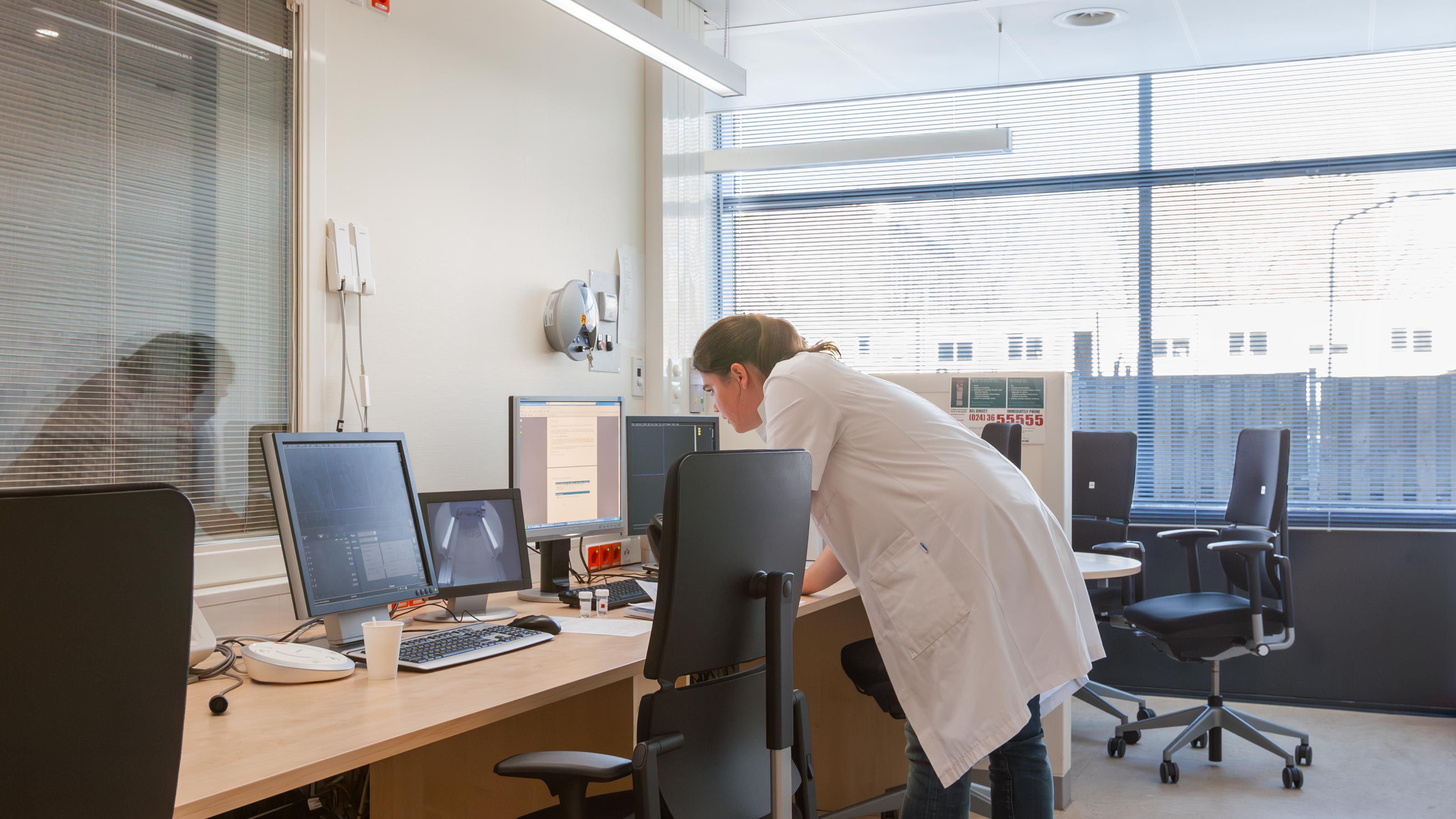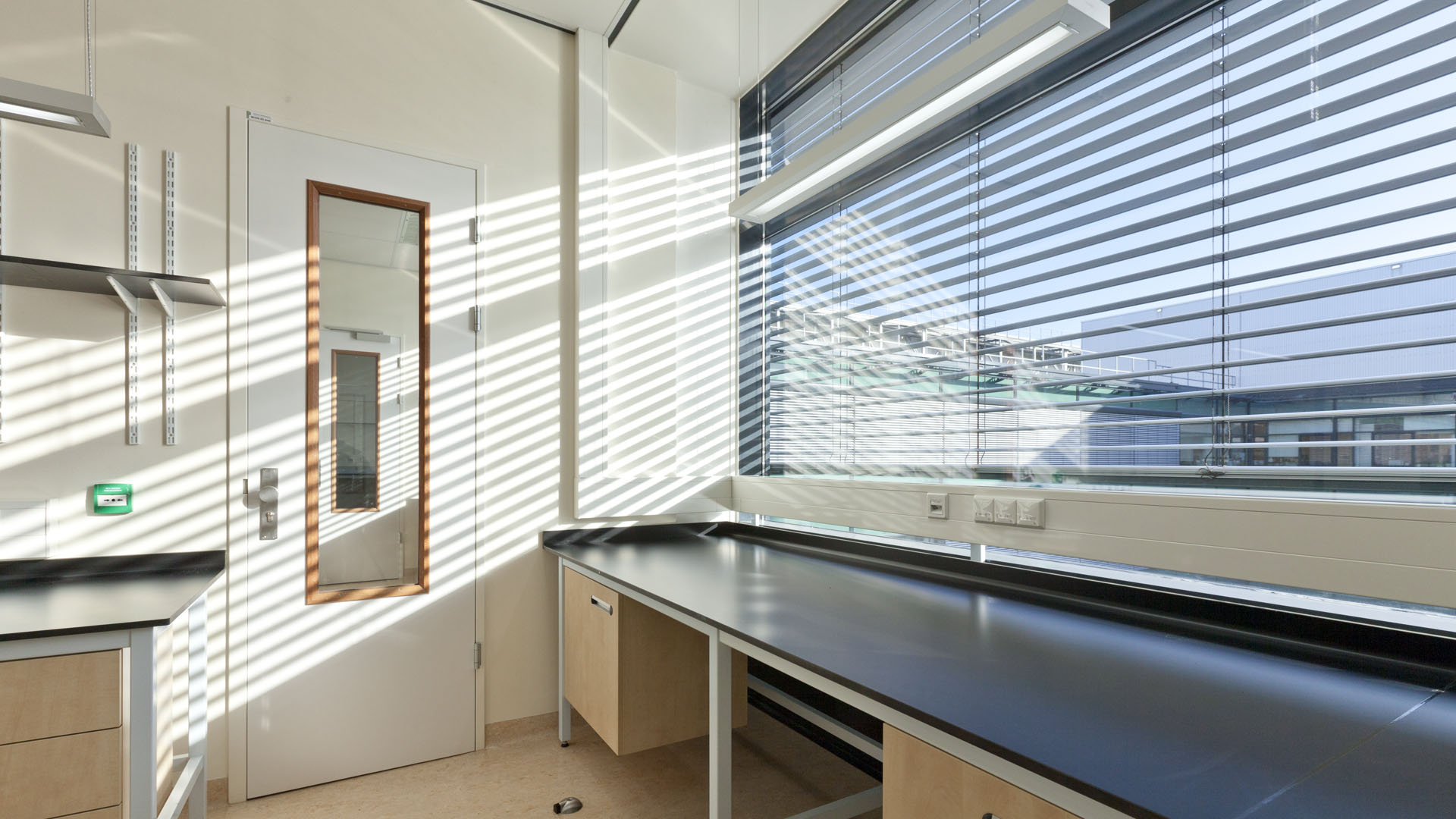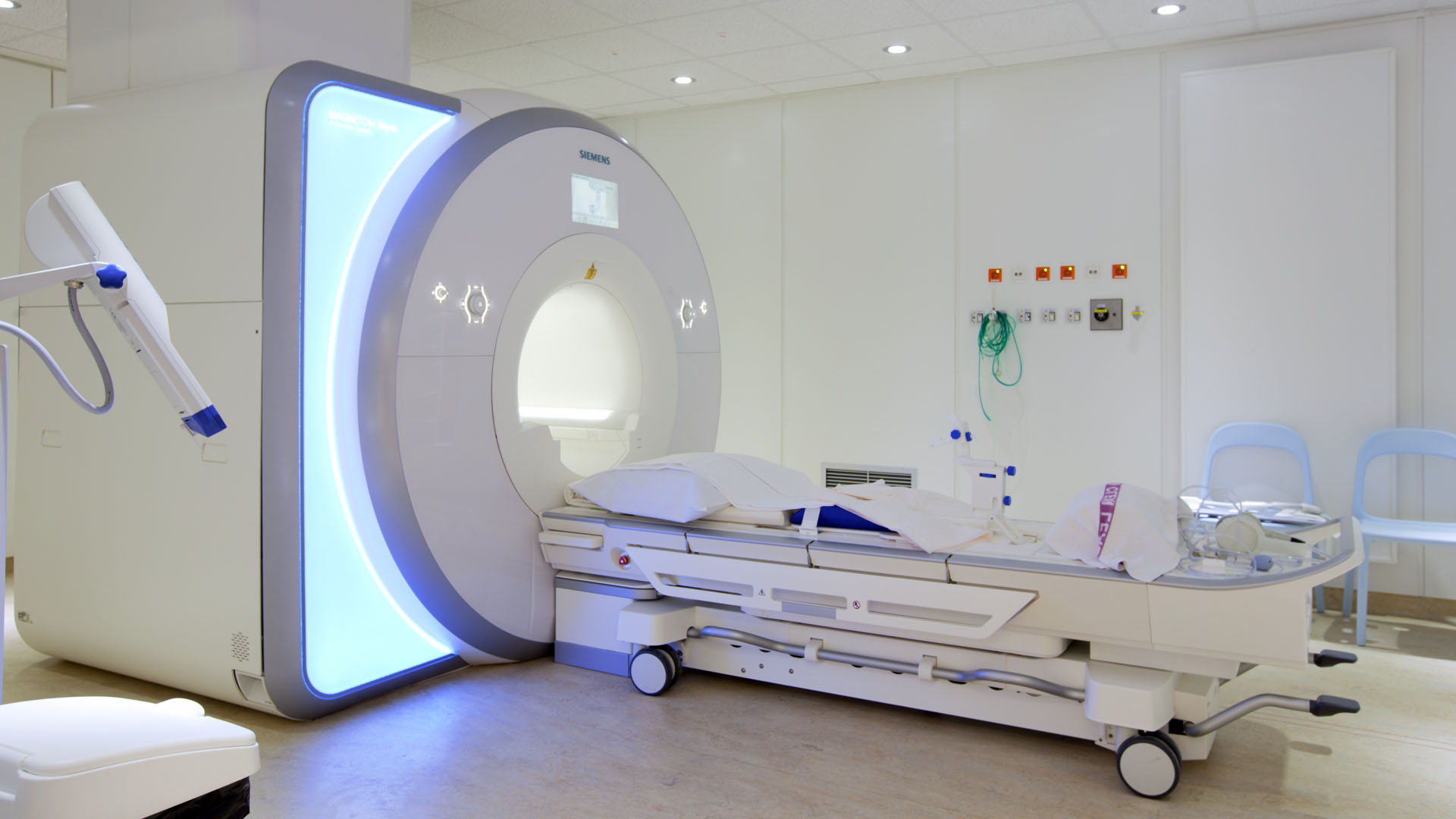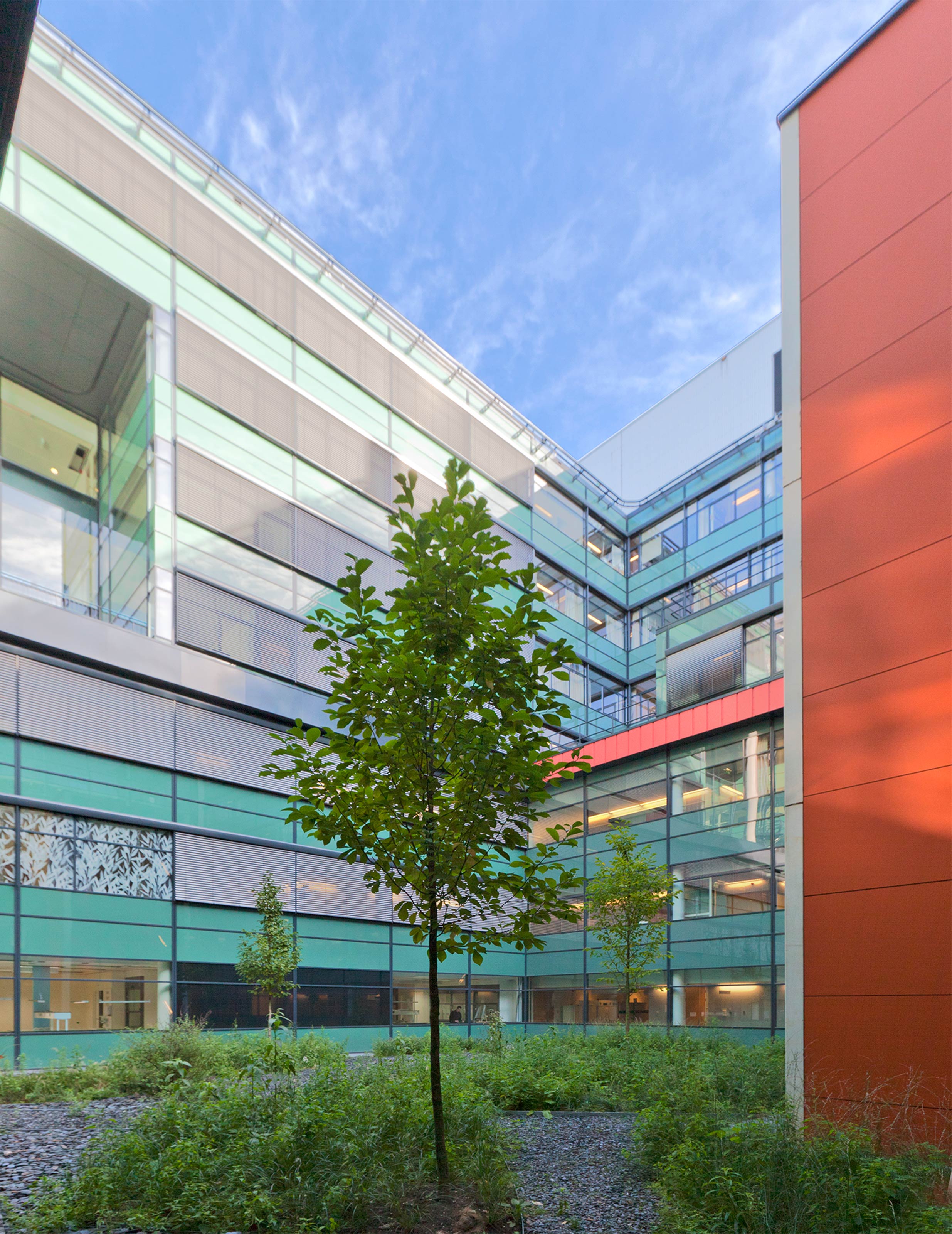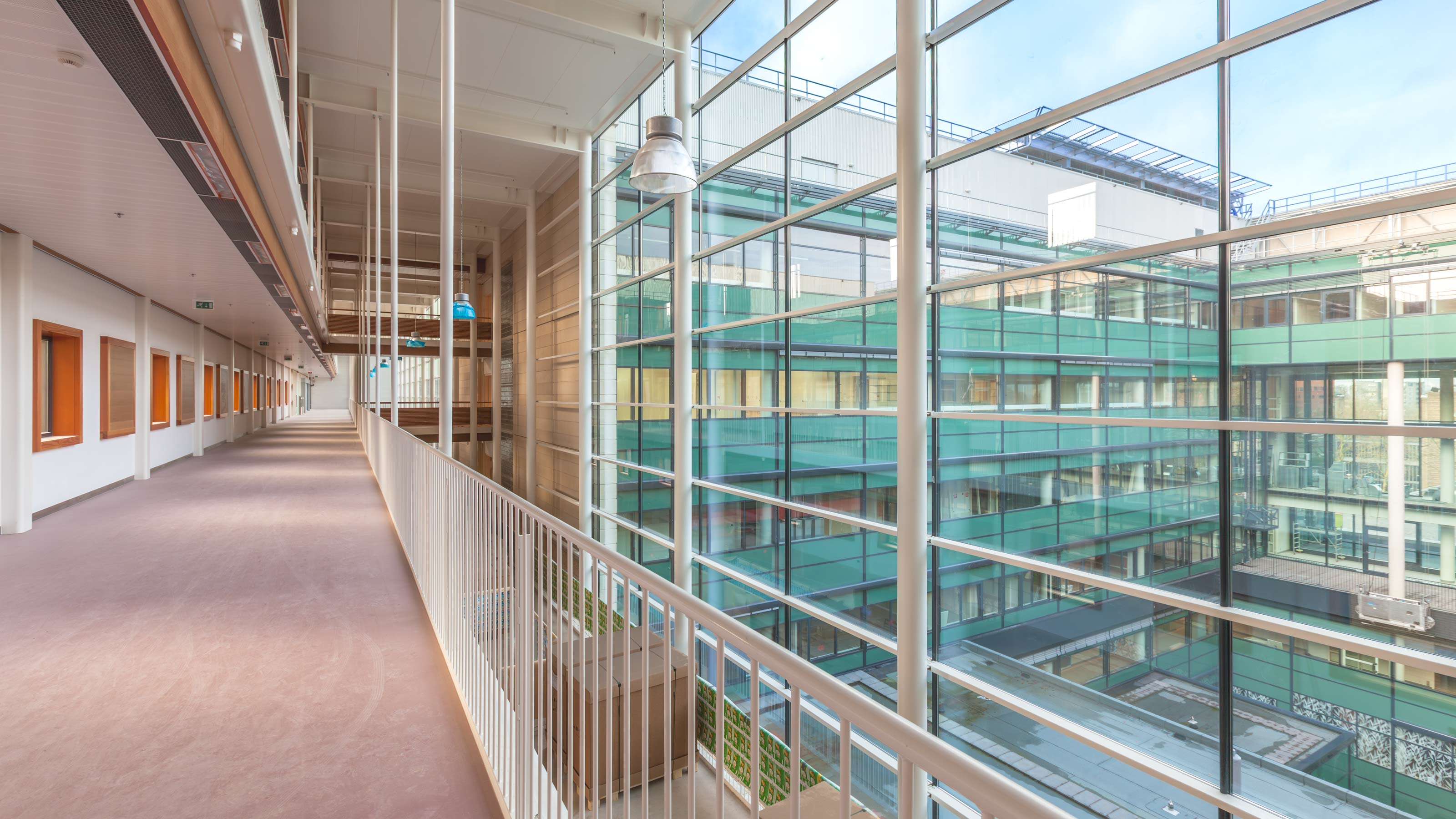
Radboudumc diagnostics and treatment
New facility for diagnostics, treatment, and emergency care, Nijmegen
Sustainably adapting to evolving insights in patient care
Academic diagnostics is a complex discipline. Designing a sustainable building to support it is equally challenging, requiring specific expertise and skills. EGM designed a diagnostics building that seamlessly adapts to the changing landscape of academic healthcare, ensuring the best possible diagnostics and treatments now and in the future, including in emergency and life-threatening situations.
View the entire projectRational yet people-oriented: that’s the diagnostics building at Radboudumc. Externally robust and solid, internally warm and inviting. Behind its sleek façade are departments such as Radiology, Nuclear Medicine, Central Endoscopy, Medical Microbiology, Cardiac Catheterisation, and Pathology, all equipped with state-of-the-art research laboratories, operating rooms, MRI scanners, and CT scanners. The building also houses a helipad, a mortuary, and the emergency department, including an ambulance hall. Constructed in two phases, the building was completed while the hospital remained fully operational.
A clear and structured design
The diagnostics building marks the first new construction on the south side of Geert Grooteplein, the heart of the Radboudumc master plan. To ensure coherence, EGM developed an urban vision that underpins the entire master plan, serving as the foundation for the diagnostics building. The result is a highly functional and well-structured design.
Urban window connecting the building to the square
The rational U-shaped structure reflects the high-tech functions it accommodates. The building's solid form sits on a light, transparent base, featuring a striking central opening known as the urban window. This architectural feature links the building to the square both visually and spatially. From within the public spaces, arranged with dynamic and staggered volumes, the building opens outwards towards the square, creating an inviting interplay of openness and natural light.
Maximising functionality within limited space
Designing a facility to house all functions and medical equipment within a relatively compact footprint required significant planning. The various functions, which need to operate both independently and collaboratively, are arranged logically. High-traffic departments, such as Emergency Care and Radiology, are located on the ground floor, while departments like Medical Microbiology and Pathology occupy the upper levels. The helipad on the roof—requiring a specialised construction—connects directly to the ground-floor emergency department and operating theatre complex via dedicated lifts.
The Netherlands' first 24-hour laboratory
The diagnostics building is designed to accommodate the latest technologies. Radboudumc was among the first in the Netherlands to centralise all patient care laboratories—combining nine labs from five departments—alongside sample reception and basic and emergency diagnostics within a single facility. A pioneering feature is the 24-hour lab, capable of delivering patient-related results within an hour. Advanced robotic logistics systems minimise the risk of errors or misplaced materials. These high-tech laboratories significantly enhance healthcare quality.
Building and relocation without disruption
The diagnostics building marked the first step in renewing the Radboudumc campus. The construction process was logistically challenging, as all hospital departments and buildings had to remain operational, including those relocating from the west side of the campus to the new facility. This complex relocation process, executed with a ‘first time right’ approach, was completed seamlessly thanks to EGM's expertise.
Flexibility as a sustainable asset
The building's strength lies in its flexibility. Its design easily accommodates the evolving needs of academic healthcare, as well as those of staff and patients. Since its inauguration in 2002, the building has seen updates, such as modernisation of day surgery operating theatres and the addition of ophthalmic surgical suites. These changes reflect organic developments within the master plan. In short, the sustainable, intelligent, and patient-friendly design has proven its value time and again.
